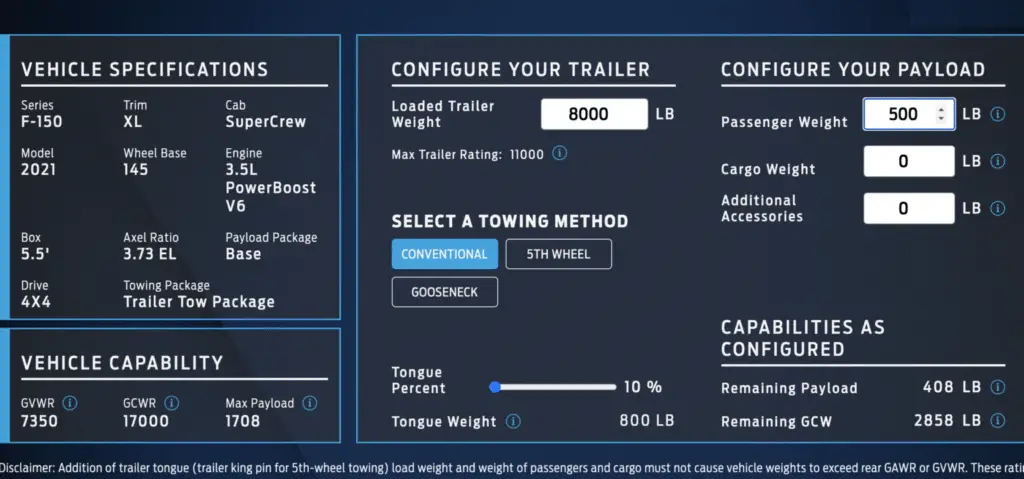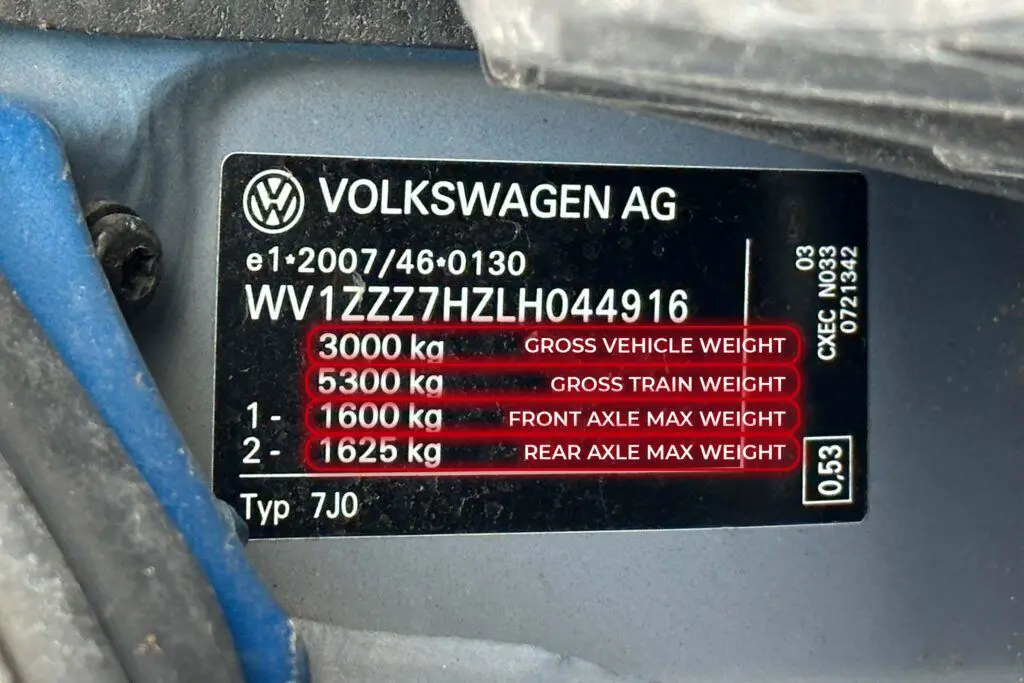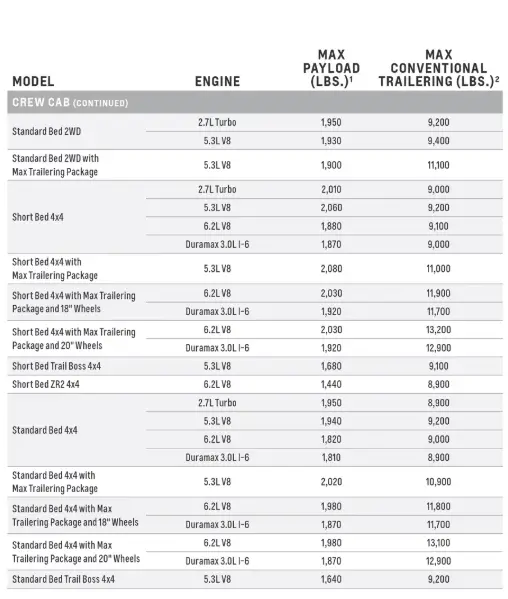Towing capacity by VIN can be found using online VIN decoders, which provide details like engine type and towing package. This helps determine your vehicle’s safe towing limit.
Determining your vehicle’s towing capacity is a crucial step before hauling heavy loads. Towing capacity by VIN is one of the most accurate ways to determine the specific weight your vehicle can safely tow. This method is essential for anyone who regularly uses their vehicle for towing, from RV owners to professional contractors. In this guide, we’ll explore what towing capacity is, how to find it using the Vehicle Identification Number (VIN), and why this information is vital for your safety and vehicle longevity.

Contents
- 1 What is a VIN and How Does It Relate to Towing Capacity?
- 2 How to Find the Vehicle’s Towing Capacity Using the VIN
- 3 Towing Capacity
- 4 Towing Capacity Calculations
- 5 Tools and Resources for Determining Towing Capacity
- 6 Why Knowing the Vehicle’s Towing Capacity Matters
- 7 Frequently Asked Questions
- 8 Conclusion
What is a VIN and How Does It Relate to Towing Capacity?
A Vehicle Identification Number (VIN) is a unique 17-character code assigned to every motor vehicle by the manufacturer. This code contains a wealth of information about the vehicle, such as the make, model, engine type, year of manufacture, value, and place of manufacture.
While the VIN itself does not explicitly state the towing capacity, it contains critical data points that can be used to identify the vehicle’s specifications. When decoded correctly, the VIN reveals essential details such as whether the vehicle is equipped with a towing package, its engine type, and its axle ratio—factors that directly affect the vehicle’s towing capacity.
How to Find the Vehicle’s Towing Capacity Using the VIN
Towing capacity by VIN can be found by using online VIN decoders, which provide detailed information about the vehicle’s specifications, such as engine type and towing package. This helps you determine the maximum weight the vehicle can safely tow.
1. Locate the VIN
The first step in finding the vehicle’s towing capacity is locating the VIN. Fortunately, this unique identifier is easy to find in multiple locations on the vehicle:
- Dashboard: Look at the driver’s side of the dashboard near the windshield. The VIN is often visible through the windshield.
- Driver’s Side Door Jamb: Open the driver’s side door, and you’ll typically find a metal plate or a label on the door frame or jamb containing the VIN.
- Vehicle Documents: You can also find the VIN on documents such as the registration, insurance papers, and title for the vehicle.
2. Use a VIN Decoder
Once you have located the VIN, the next step is to decode it to extract important details about the vehicle’s configuration. You can use a variety of online VIN decoders for this purpose. These decoders will provide you with details such as engine type, vehicle configuration, and whether your vehicle has the towing package installed.
Some reputable VIN decoders you can use include:
These tools are fast, free, and accurate, providing you with detailed insights into the vehicle’s towing capabilities based on its unique VIN.
3. Consult the Manufacturer’s Specifications
For the most accurate towing capacity details, it is always recommended to refer to the vehicle’s owner manual or contact the vehicle manufacturer directly. Manufacturers provide detailed towing specifications that consider the vehicle’s engine type, transmission, axle ratio, and whether it has been equipped with any towing enhancements such as cooling systems, heavy-duty brakes, or reinforced suspension.
Vehicle dealerships can also assist by looking up the VIN in their systems and providing towing capacity specifications based on the model year and configuration.

Towing Capacity
Towing capacity is the maximum weight a vehicle is rated to safely tow. It is a critical figure that should never be exceeded, as towing beyond this capacity can lead to engine strain, transmission damage, and unsafe driving conditions. Several factors affect a vehicle’s towing capacity, and understanding them is key to determining the correct towing load.
Factors that Affect Towing Capacity
Towing capacity is influenced by several vehicle characteristics, each contributing to the vehicle’s overall ability to safely handle heavy loads. Understanding these factors is essential for ensuring that you do not exceed the vehicle’s limitations, which could lead to mechanical issues or safety risks.
1. Engine Power
The engine’s horsepower and torque are the primary determinants of a vehicle’s towing capacity. A more powerful engine with higher torque allows the vehicle to handle heavier loads with ease.
- Horsepower: The greater the horsepower, the more power the engine can generate, improving the ability to tow heavy loads.
- Torque: Torque is crucial for towing, as it determines the vehicle’s ability to move heavy loads from a standstill. Vehicles with higher torque can manage more substantial weights.
2. Transmission Type
The type of transmission in a vehicle can also play a significant role in towing capacity. Generally, vehicles with automatic transmissions tend to be better suited for towing as they can manage shifts more smoothly under load. However, manual transmissions, when used properly, can still provide solid towing capacity.
3. Axle Ratio
The axle ratio determines how much force the wheels can apply to move the vehicle and any attached trailer. A higher axle ratio improves towing capacity by providing greater mechanical advantage when pulling a load. If your vehicle has a high axle ratio, it will likely be capable of towing heavier loads with greater ease.
4. Towing Package
A towing package includes additional modifications that enhance the vehicle’s ability to tow safely. These modifications may include:
- Heavy-duty radiators and transmission coolers to prevent overheating.
- Upgraded suspension to handle the additional weight.
- Reinforced chassis and hitch for added towing strength.
- Enhanced braking systems to safely handle heavier loads.
Vehicles equipped with towing packages are rated to tow more weight than those without.
Towing Capacity Calculations
If a vehicle’s towing capacity isn’t readily available, you can estimate it using the following formula:
Towing Capacity = Gross Combined Weight Rating (GCWR) – Gross Vehicle Weight Rating (GVWR)
Where:
- GCWR (Gross Combined Weight Rating) is the maximum allowable weight of the vehicle and trailer combined.
- GVWR (Gross Vehicle Weight Rating) is the maximum weight of the vehicle itself, including passengers, cargo, and any installed accessories.
By subtracting the vehicle’s weight (GVWR) from the combined weight limit (GCWR), you can calculate the vehicle’s maximum towing capacity.
However, this is an estimate, and for the most accurate information, always refer to the manufacturer’s guidelines.

Tools and Resources for Determining Towing Capacity
If you want to ensure that you’re towing within the safe limits of the vehicle, here are some resources and tools that can help:
- Vehicle Owner’s Manual: Always check the vehicle’s owner’s manual for towing specifications and guidelines. It contains the most reliable information specific to your vehicle model.
- Online VIN Decoders: VIN decoder tools, like the ones mentioned earlier, can provide you with essential information regarding your vehicle’s towing capacity.
- Dealerships: Authorized dealerships have access to detailed vehicle data and can provide towing capacity specifics based on your VIN.
- Towing Capacity Calculators: Some websites offer towing calculators where you can enter details about your vehicle to determine its towing limits.
Why Knowing the Vehicle’s Towing Capacity Matters
Knowing the vehicle’s towing capacity is critical for ensuring safe towing practices. Overloading the vehicle can lead to a variety of issues, such as:
- Increased Risk of Accidents: Exceeding the vehicle’s towing limit can make it harder to control, increasing the likelihood of accidents or damage to both the vehicle and trailer.
- Engine and Transmission Damage: Overloading can lead to excessive heat, causing engine and transmission components to fail prematurely.
- Reduced Braking Efficiency: The additional weight of an overloaded trailer can strain the braking system, increasing stopping distances and reducing safety.
- Legal Issues: Towing beyond the manufacturer’s rated towing capacity could violate local regulations, leading to fines or invalidating the insurance.
Frequently Asked Questions
Here are some FAQs about towing capacity by the VIN –
1. Can I find my vehicle’s towing capacity using the VIN?
Yes, you can use online VIN decoders to determine the vehicle’s towing capacity based on the VIN. Additionally, consulting the vehicle’s owner manual or contacting the manufacturer will give you the most accurate information.
2. What factors influence my vehicle’s towing capacity?
Engine power, transmission type, axle ratio, and whether the vehicle is equipped with a towing package are key factors that affect towing capacity.
3. Does the VIN contain information about my towing package?
Yes, the VIN can indicate whether a vehicle is equipped with a towing package. This package typically includes modifications to the engine, suspension, and braking systems to enhance towing capability.
4. How do I calculate my vehicle’s towing capacity if the number is not listed?
You can estimate the towing capacity using the formula: Towing Capacity = GCWR – GVWR. However, for the most accurate results, consult the manufacturer’s specifications.
5. Is it dangerous to tow beyond my vehicle’s rated capacity?
Yes, exceeding a vehicle’s towing capacity can lead to mechanical failures, accidents, and reduced safety. It’s important to always stay within the manufacturer’s recommended towing limits.
Conclusion
Determining the vehicle’s towing capacity by VIN is a straightforward process that provides important information for safe towing practices. By using online VIN decoders, consulting the manufacturer’s specifications, and understanding the factors that influence towing capacity, you can make informed decisions about what to tow and how to tow it safely. This knowledge is important for ensuring the longevity of the vehicle and protecting the safety while on the road.